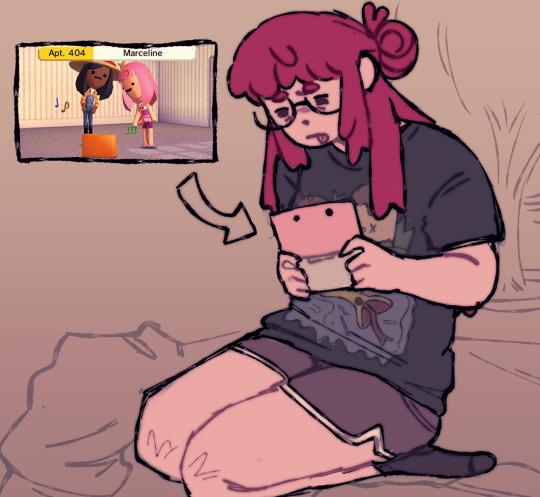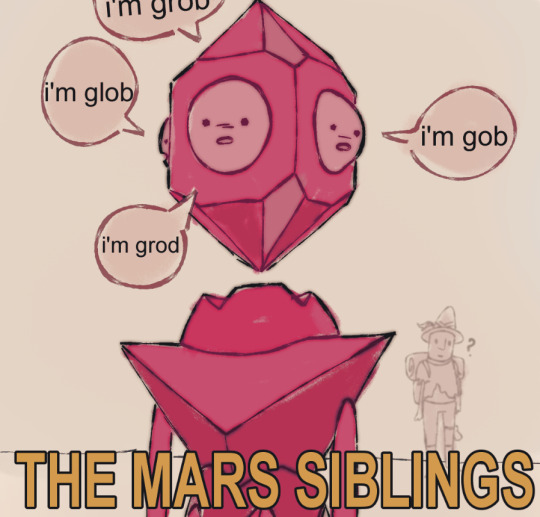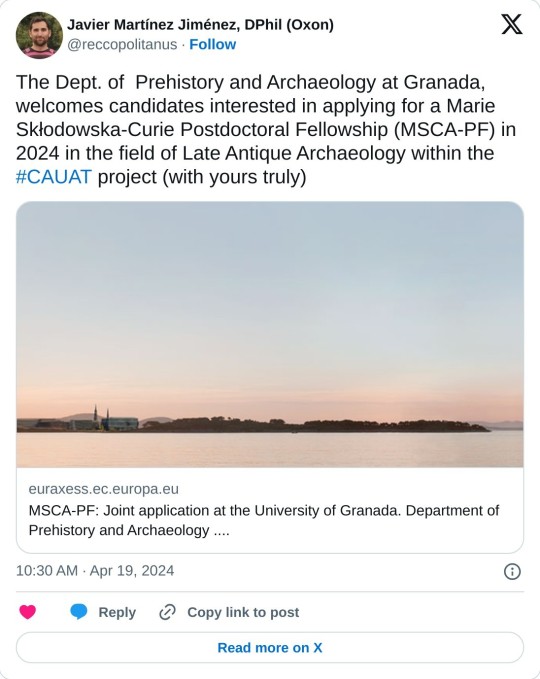#Postdoctoral
Explore tagged Tumblr posts
Text
MIT graduate programs empower the next generation of naval leaders
New Post has been published on https://thedigitalinsider.com/mit-graduate-programs-empower-the-next-generation-of-naval-leaders/
MIT graduate programs empower the next generation of naval leaders


Designing a ship or submarine for the U.S. Navy requires an understanding of naval architecture, hydrodynamics, electrical and structural engineering, materials science, and more. That’s why the Navy works so closely with MIT, where some of the world’s foremost experts in each of those disciplines converge.
The largest among the graduate-level naval programs at MIT is the 2N Graduate Program in Naval Architecture and Marine Engineering. The three-year 2N program helps naval officers work at the intersection of different academic disciplines to design ships and submarines from the ground up and solve the complex technical problems that arise from completing missions on the sea.
“The 2N program is designed to take officers who have experience operating ships and submarines and get them the technical foundation they need to be technical leaders in the Navy,” says 2N Professor of the Practice Andrew Gillespy, who graduated from the program himself in 2008. “We’re building the next generation of ship and submarine designers for the U.S. Navy.”
The MIT-Woods Hole Oceanographic Institution (WHOI) Joint Program also enrolls naval officers, in its dedicated master’s program in oceanography and applied ocean science and engineering, where they work on Navy-related research ranging from autonomous vehicles to applied ocean science, physical oceanography, and more. While the 2N program, which was founded back in 1901, has been around a lot longer than the MIT-WHOI Program, naval officers were among the first graduates of MIT-WHOI in 1970.
“The Navy’s been with us from the beginning,” WHOI Senior Scientist Ann Tarrant says. “MIT’s various naval offerings really show the strong link between the institutions. It shows MIT’s commitment to doing research that is valuable to our nation’s security, and the high esteem the Navy places on MIT more broadly.”
At MIT, both the 2N and MIT-WHOI programs are housed within the Department of Mechanical Engineering; MIT-WHOI, which also offers a doctoral program, is jointly hosted by the Department for Earth, Atmospheric and Planetary Sciences. Still, the programs engage students and faculty from across the Institute.
“Our students work with pretty much every professor who touches ocean engineering,” Gillespy says. “One of the great parts about our program is the ability for the students to do one-on-one thesis work with the best professors in the world here at MIT. That is something that the Navy really, values.”
A century of training naval leaders
MIT was one of the first educational institutions to include oceanography in its curriculum and has played a leading role in advancing the discipline. The Department of Mechanical Engineering first offered a program in marine engineering and naval architecture in 1886, which led to the Department of Naval Architecture.
The program has changed names several times since then, but it can be mapped to today’s Center for Ocean Engineering, which continues to support the Navy and MIT’s naval programs through its research.
The 2N program was founded in 1901 and has been taught by active-duty faculty members for close to a century. Students in the program, who also include members of the U.S. Coast Guard as well as foreign naval officers, jump back into academia with two years of classes followed by an industry-sponsored design project.
“The program gives you a solid foundation in naval engineering and the leeway to study what’s interesting to you; this way you can bring new research back to the fleet,” says Adam Jay Pressel, who’s entering his third and final year in the 2N program. “Being a full-time graduate student and naval officer at one of the best universities in the world is probably the best job I’ll ever have.”
Gillespy notes that while the requirements for most MIT master’s students is 72 credits plus a thesis, 2N graduates earn around 300 credits over their three years.
The reason for the high course load is that 2N graduates get two master’s degrees, and the 2N Naval Engineer’s degree is earned by meeting both MIT and the Navy’s requirements.
“We encourage them to get the second degree in an area they’re interested in and really want to pursue,” Gillespy says. “We’ve had students working in electrical engineering on power systems, in mechanical engineering, and system design and management, which is the joint program with the business school and the engineering program. That program is great because we’re not just engineers. In the future, our students are going to be technical leaders, so getting that leadership and management expertise from the business school is great. But you probably can’t pick a course at MIT that we haven’t had somebody get a second degree in.”
The MIT-WHOI master’s program is usually a little over two years long and features coursework at WHOI and MIT followed by a master’s thesis. Naval students have worked on topics like ocean circulation, autonomous vehicles, and meteorology.
“Having naval officers really benefits our whole student body and program,” Tarrant says. “They have a lot of extremely valuable real-world experience, and they help us understand how the research we’re doing can make an impact in the Navy and on the world.”
Tarrant notes that many faculty members and researchers at both MIT and WHOI work on projects funded by the Navy, and naval officers bring valuable perspectives to that work.
“It helps us align the work we do with the Navy’s mission,” Tarrant says. “WHOI and MIT more broadly have a long-standing relationship with the Navy that really helps us.”
MIT leaves its mark
Naval officers’ work at MIT has gone on to make a huge impact on the Navy. Several students’ ship design and conversion projects from the 2N program have gone on to become actual ships the Navy builds. In 2019, 2N students worked on converting a massive destroyer called the DDG 1000 to accommodate hypersonic missiles. The students concept design showed it was feasible, and the Navy is actively overseeing that conversion now.
The graduates themselves have also gone on to assume leadership roles at every level of the Navy. The current program manager for a major Navy initiative designing a new class of submarines is 2N graduate Admiral Pete Small ’05, SM ’05, who previously taught as a professor of the practice at MIT.
“Our program has a really proud history of producing officers that are great leaders and have the technical foundation to lead highly advanced programs,” Gillespy says.
Gillespy says his own experience in the Navy has underscored the value of the 2N program. He and several other graduates of the program were responsible for designing the Columbia-class submarine, which is scheduled to go into service in 2031.
“Every day when we were designing the Columbia class submarine, we had the world’s experts in a particular area come in and present their design thoughts and what they’re working on, and being able to have intelligent conversations and push the program forward across all the disciplines was critical,” Gillespy says. “There wasn’t a course that I took here that I couldn’t trace back to a discipline that I was working on. My fellow officers echoed the sentiment of how well MIT prepared us to do submarine design.”
#architecture#autonomous#autonomous vehicles#Building#Business#classes#Classes and programs#course#Design#designers#EAPS#earth#Education#teaching#academics#Engineer#engineering#engineers#Faculty#Features#Foundation#Full#Future#Graduate#postdoctoral#History#how#hydrodynamics#hypersonic#impact
2 notes
·
View notes
Photo

Communicating across time TeleAbsence, a project from the MIT Media Lab, probes and imitates the way humans process feelings of belonging, love, and loss. https://news.mit.edu/2023/communicating-across-time-teleabsence-0811
#Arts#Augmented and virtual reality#Communications#Students#Technology and society#Graduate#postdoctoral#Media Lab#Visual arts#Art#Culture and Technology#Center for Art#Science and Technology#School of Architecture and Planning#Ken Shulman | Arts at MIT#MIT News
2 notes
·
View notes
Text
I wonder how Finn would react to meeting a postdoc






misc AT things
#postdoc#postdoctoral#adventure time#fionna and cake#betty grof#magic betty#simon petrikov#bonnibel bubblegum#princess bubblegum#petrigrof#grob gob glob grod
5K notes
·
View notes
Text
Postdoctoral Research Associate - Chemical Engineering
Job title: Postdoctoral Research Associate – Chemical Engineering Company: Oak Ridge National Laboratory Job description: Requisition Id 15028 Overview: We are seeking a Postdoctoral Research Associate – Chemical Engineering to support… of powering deep space missions. To do so, a myriad of chemical processing steps are required to prepare targets for irradiation… Expected salary: Location: Oak…
0 notes
Text
Postdoctoral Fellow Position on Animal Neurotrauma - Stockholm Sweden
job Dear friends, colleagues, We are seeking a highly motivated postdoctoral fellow to work on virtual analysis of rat experiments for brain trauma. Please feel free to share this position with potential candiates. Project: Virtual Analysis of Rat Experiments for Traumatic Brain Injury Deadline: 2025-08-21 Follow the link to apply: https://www.kth.se/en/om/jobba-p … gineering-1.1413105 Best…
0 notes
Text
School of Science announces 2022 Infinite Expansion Awards
🧬 ..::Science & Tech::.. 🧬 Eight postdocs and research scientists within the School of Science honored for contributions to the Institute
#MIT#Awards#Honors#Fellowships#Staff#Graduate#Postdoctoral#Biology#BrainAndCognitiveSciences#Chemistry#Physics#KavliInstitute#Laboratory#NuclearScience#McGovernInstitute#PicowerInstitute#Mentoring#Education#Teaching#Academics#SchoolOfScience
0 notes
Text
New book release! Pick up a copy today! #humor #scarlett #books #americanAuthors #techWriters #cryptovanDownsByARiver
#PCX.54j#Dr. Nathaniel Henry Scarlett-Johansson Fox#Cryptovan Down’s By A River#The Eyes of an Autistic Yogi#American authors#tech writers#postdoctoral#Doctorate of English#Scarlett Johansson
0 notes
Photo

The whisper of a program's impact spreads quickly. In the beginning, it was only a relative handful of students who had the heart to follow the path of the Three Tata Fellows. But soon, a ripple of change began to spread, as more and more people heard of their plight and the way they dedicated themselves to improving the world. The Three Tata Fellows seemed to almost exist in two worlds at once - the one experienced by their fellow peers, and one seen only by them. They lived life on a higher level than most could understand, and operated with a level of understanding and insight that was unparalleled. Each of the Three Tata Fellows had achieved extraordinary things in the real world - inspiring others with their passion and commitment to the cause - but all had experienced a transformation of sorts during their involvement in the program. What began as a simple program of learning and growth had evolved into something much more - a way of life that impacted not only themselves, but the world around them.
#Interview#Students#Graduate#postdoctoral#Awards#honors and fellowships#Energy#Renewable energy#Batteries#Emissions#Climate change#Sustainability#Policy#Technology and policy#Government#International initiatives#Developing countries#Social justice#Cleaner industry#Electric vehicles#Tata Center#MIT Energy Initiative#MIT Schwarzman College of Computing#fault#Tata fellows#program impact#lives#movement#world
1 note
·
View note
Text
For MIT-WHOI Joint Program student Faith Brooks, the sky’s the limit
New Post has been published on https://thedigitalinsider.com/for-mit-whoi-joint-program-student-faith-brooks-the-skys-the-limit/
For MIT-WHOI Joint Program student Faith Brooks, the sky’s the limit


Faith Brooks, a graduate student in the MIT-WHOI Joint Program, has had a clear dream since the age of 4: to become a pilot.
“At around 8 years old, my neighbor knew I wanted to fly and showed me pictures of her dad landing a jet on an aircraft carrier, and I was immediately captivated,” says Brooks. Further inspired by her grandfather’s experience in the U.S. Navy (USN), and owing to a lifelong fascination with aviation, she knew nothing would stand in her way.
Brooks explored several different paths to becoming a pilot, but she says one conversation with her longtime mentor, Capt. Matt Skone, USN (Ret.), changed the trajectory of her life.
“He asked if I had heard of the Naval Academy,” she recalls. “At the time, I hadn’t … I immediately knew that that was where I wanted to go, and everything else I learned about United States Naval Academy (USNA) reinforced that for me.”
In her “firstie” (senior) year at the USNA, Brooks was selected to go to Pensacola, Florida, and train to become a naval pilot as a student naval aviator, taking her one step closer to her dream. The USNA also helped guide her path to MIT. Her journey to joining the MIT-WHOI Joint Program began with the USNA’s professional knowledge curriculum, where she read about retired Capt. Wendy Lawrence SM ’88, a naval aviator and astronaut.
“Reading her bio prompted me to look into the program, and it sounded like the perfect program for me — where else could you get a better education in ocean engineering than MIT and Woods Hole Oceanographic Institution [WHOI]?”
In the MIT-WHOI Joint Program, Brooks is researching the impact of coastal pond breaching on preventing and mitigating harmful algal blooms. Her work focuses on the biannual mechanical breaching of Nantucket’s Sesachacha Pond to the ocean and the resultant impact on the pond’s water quality. This practice aims to improve water quality and mitigate harmful algal blooms (HABs), especially in summer.
Breaching in coastal ponds is a process that was initially used to enhance salinity for herring and shellfish habitats, but has since shifted to address water quality concerns. Traditionally, an excavator creates a breach in the pond, which naturally closes within one to five days, influenced by sediment transport and weather conditions. High winds and waves can accelerate sediment movement, limiting ocean water exchange and potentially increasing eutrophication, where excessive nutrients lead to dense plant growth and depletion of oxygen. In brackish water environments, harmful algal blooms are often driven by elevated nitrogen levels and higher temperatures, with higher nitrogen concentrating leading to more frequent and severe blooms as temperatures rise.
The Nantucket Natural Resources Department (NRD) has been collaborating with local homeowners to investigate the pond breaching process. Existing data are mainly anecdotal evidence and NRD’s monthly sampling since 2022, which has not shown the expected decrease in eutrophication. Brooks’ research will focus on data before, during, and after the breach at two pond sites to assess water changes to evaluate its effectiveness in improving water quality.
When Brooks isn’t knee-deep in the waters of the Sesachacha or training with her MIT Triathlon team, she takes additional opportunities to further her education. Last year, Brooks participated in the MIT-Portugal Marine Robotics Summer School in Faial, Azores, in Portugal, and immersed herself in a combination of a hands-on design projects and lectures on a variety of topics related to oceanography, engineering, and marine robotics.
“My favorite part of the program was how interdisciplinary it was. We had a combination of mechanical engineers, electrical engineers, computer scientists, marine biologists, and oceanographers, and we had teams that included each of these specialties,” she says. “Our project involved designing a lander equipped with an underwater camera connected to a surface buoy that would transmit the footage. Having worked in mostly just engineering teams previously, it was a great experience to work with a more diverse group and I gained a much better understanding of how to design instruments and systems in accordance with what the marine biologists need.”
Brooks also earned her Part 107 Small Unmanned Aircraft System (UAS) license to operate the lab’s drone with a multispectral camera for her upcoming fieldwork. When she graduates from the MIT-WHOI Joint Program next September, she’ll report to the Naval Aviation Schools Command in Pensacola, Florida, to begin flight training.
While she says she’ll miss Boston’s charm and history, as well as the Shining Sea Bikeway on crisp fall days in Woods Hole, Brooks is looking forward to putting her uniform back on, and starting her naval career and flight school. The time Brooks has spent at MIT will support her in these future endeavors. She advises others interested in a similar path to focus on research within their areas of interest.
“The biggest lesson that I’ve learned from both research theses is that any research project will change over time, and it’s often a good idea to take a step back and look at how your work fits into the larger picture,” she says. “I couldn’t recommend doing research more; it’s such a great opportunity to dig into something that you’re interested in, and is also very fulfilling.”
#2022#aircraft#aviation#breach#career#change#command#computer#data#Design#drone#education#engineering#engineers#flight#focus#Future#Graduate#postdoctoral#growth#hands-on#History#how#how to#impact#it#knee#life#limiting#marine
1 note
·
View note
Text
#none for Gabriel Goodman because he IS the coping mechanism#I bet Dr. Madden's dad was like 'Why can't you get addicted to drugs like my friend's kids?!?? A postdoctorate—really???'#Next to Normal#...i do not know how to spell magic mushropms#polls
13 notes
·
View notes
Text
JOB ALERT: MSCA-PF Joint application at the University of Granada (Spain) Department of Prehistory and Archaeology

If anyone is interested in a two-year MSCA Postdoctoral Fellowship at the University of Granada within the field of late antique archaeology, please check this link with the basic information.
#Archaelogy#Acedemia#graduate job#postdoctoral job#late antiquity#if anyone applies and mentions they saw this on tumblr they'll get all my support forever
56 notes
·
View notes
Text
Three with MIT ties win 2022 Churchill Scholarships
🧬 ..::Science & Tech::.. 🧬 Seniors David Darrow and Tara Venkatadri and HST student James Diao will pursue master’s programs at Cambridge University
#MIT#Awards#Students#Undergraduate#Graduate#Postdoctoral#Aeronautical#Astronautical#Languages#Mathematics#Harvard-MIT#HealthSciences#Technology#Mentoring#SchoolOfEngineering#SchoolOfScience#SchoolOfHumanities#ArtsAndSocial#Science
0 notes
Text
Data Prep Day!
Finally fully back at work and in R/RStudio today. Today's goal was to set up some basic structural topic models using a dataframe of information about PubMed publications on post-acute COVID-19 sequalae.
No exciting results today, but if you're interested in topic modeling or wrangling data in R, I made a video so you can follow along with me while I code. Not a formal lesson, more of a "come to work with me" thing. Enjoy!
Highlights:
Full Video:
youtube
#come to work with me#postdoc life#postdoctoral research#public health#complex systems#pubmed#text as data#R#R studio#coding#data science#learn to code#code with me#research#academic research#science#phdblr#gradblr#studyblr#scienceblr#long covid#covid#covid research#Youtube
3 notes
·
View notes
Text

#emma frans#science communicator#Epidemiologist#writer#emma#swedish#postdoctoral researcher#researcher#brain
6 notes
·
View notes
Photo

Question and answer session: Three Tata fellows discuss the program's impact on themselves and the world. What started as a chance to change their lives has become a movement to change the world.
#Interview#Students#Graduate#postdoctoral#Awards#honors and fellowships#Energy#Renewable energy#Batteries#Emissions#Climate change#Sustainability#Policy#Technology and policy#Government#International initiatives#Developing countries#Social justice#Cleaner industry#Electric vehicles#Tata Center#MIT Energy Initiative#MIT Schwarzman College of Computing#fault#Tata fellows#program impact#lives#movement#world
0 notes